Every day, construction workers face risks on the job, and companies grapple with issues like safety hazards and cost overruns. As stated by OSHA, construction falls among the most dangerous industries in the US, represented by high rates of accidents and casualties. In the US, there were 1,102 construction fatalities reported in 2020, and that is not the end of it. They also suffer from cost overruns in their projects. Luckily, the development of AI systems is providing answers to such issues as ensuring safety on construction sites and preventing overrunning of budgets.
For example, AI-powered sensors and wearables can monitor workers’ health and safety in real time, helping to prevent accidents and injuries. Also, AI algorithms can analyse project data to identify potential risks and predict cost overruns before they occur. With predictive analytics, construction companies can better anticipate and mitigate these challenges, saving time and resources in the process. In this article, we will discuss how AI technology holds tremendous potential for transforming the construction industry, addressing key benefits and challenges faced by both workers and companies.
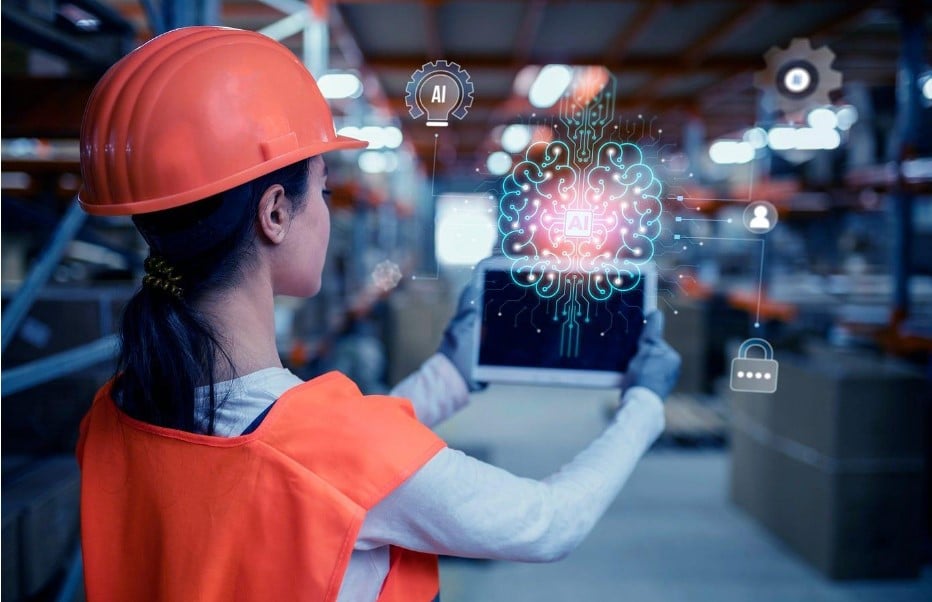
Generative AI for Design and Material Innovation
In the field of construction, Generative AI offers technological advancements in design and material innovation across the globe. With AI technologies, engineers and designers can come up with design innovations that were never perceived before. The bio-textiles area is promising as generative AI opens up possibilities for combining natural and synthetic fabrics to make the fabrics stronger and more flexible. MarketsandMarkets report states that the market for bio-based textiles is projected to reach USD 19.8 billion by 2025, with advances in AI-based design being one of the primary drivers.
In the field of advanced construction materials, Generative AI is being used to create materials with improved strength, thermal efficiency, and eco-friendliness. One study shows that AI algorithms optimising the molecular structure of materials are advancing to new developments in concrete, steel, and composite materials. Some particular buildings, especially those with unique designs and futuristic architecture, are also benefiting massively from Generative AI. Autodesk’s case study indicates that Generative Design helped develop the world’s first bridge, which went completely over a canal in Amsterdam without a single human hand.
Additionally, AI-driven algorithms are helping optimise dye formulations for sustainable construction project materials and environmental waste reduction. As reported in the Journal of Cleaner Production, artificial intelligence (AI) based colour prediction models have shown an increase in dyeing efficiency of up to 30%, leading not only to cost savings but also to reduced chemical usage.
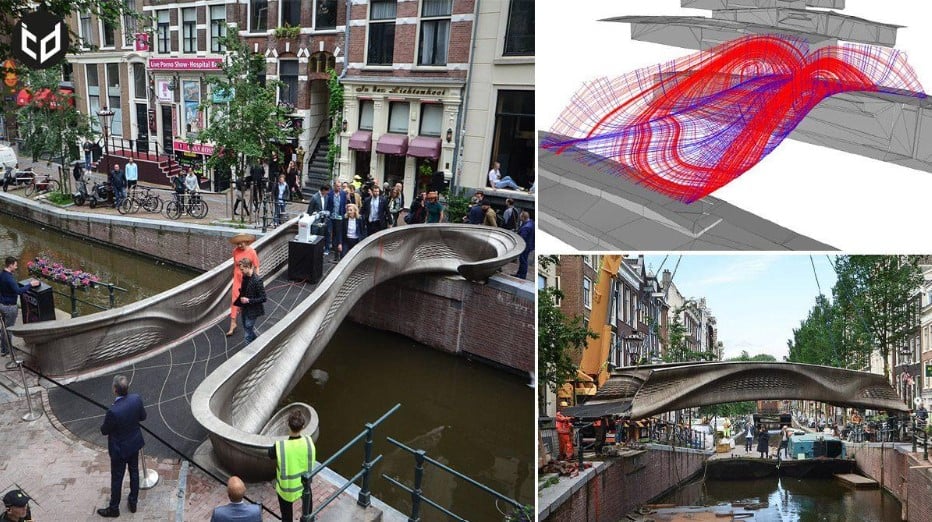
Computer Vision for Color Matching and Quality Control
Real-time colour matching and quality control are vital in construction projects to ensure consistency and precision, enhancing both the aesthetics and functionality of structures. With Computer Vision, construction teams can achieve accurate colour matching and streamline inspection processes with greater efficiency and reliability. Computer Vision enables automatic detection and analysis of colours, textures, and patterns, minimising human error and subjectivity. According to Grand View Research, the global market for construction technology is expected to reach $3.7 billion by 2027, driven by the demand for enhanced quality control and productivity.
At construction sites, where safety hazards abound, real-time colour matching and quality control prevent accidents and ensure compliance with safety standards. By integrating Computer Vision systems with inspection processes, construction teams can promptly identify defects, structural abnormalities, and safety hazards. Research highlights how Computer Vision inspection systems have reduced safety incidents by up to 25% on construction sites, improved productivity by 15% and reduced rework by 20% on a large-scale construction project.
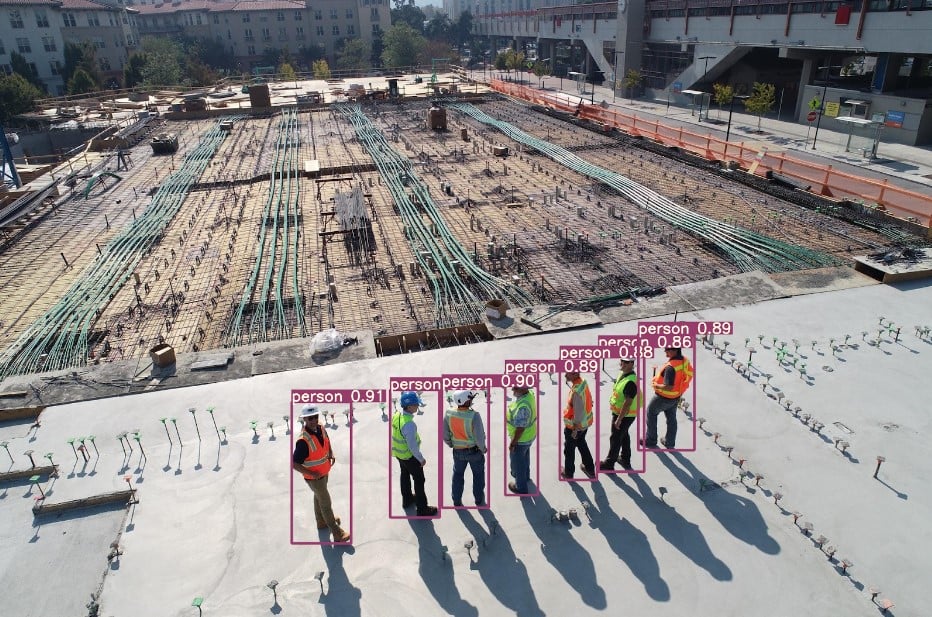
AR/VR/MR/XR for Enhanced Visualisation and Inspection
AR/VR/MR/XR construction technology enables interactive visualisation and monitoring of worksites in an immersive way. These technological advancements enable construction workers and project managers to enhance project planning and decision-making like never before. With AR, construction workers can superimpose digital information onto the actual job site environment in real time. This aids in the improvement of multi-story construction plans and makes tasks more precise. Marketsandmarkets states that the worldwide market for AR in construction might be worth $1.4 billion in 2026 as contractors hunt for onsite productivity and safety.
Virtual Reality (VR) offers stakeholders a chance to walk around and work with 3D models of construction projects in a virtual environment that is exactly like the real one. This facilitates better communication and collaboration among project teams, leading to more informed decision-making. A report by McKinsey & Company states that VR simulations can decrease the project time by 10% and make the projects more effective overall.
On the other hand, extended reality (XR) creates interactive virtual reality using both AR and VR, which closely mimics real-world experiences. Construction workers can easily perform virtual inspections of construction sites, thereby finding hidden risks and safety hazards before they occur. Research reveals that XR-based training systems can increase worker productivity by as much as 20%.
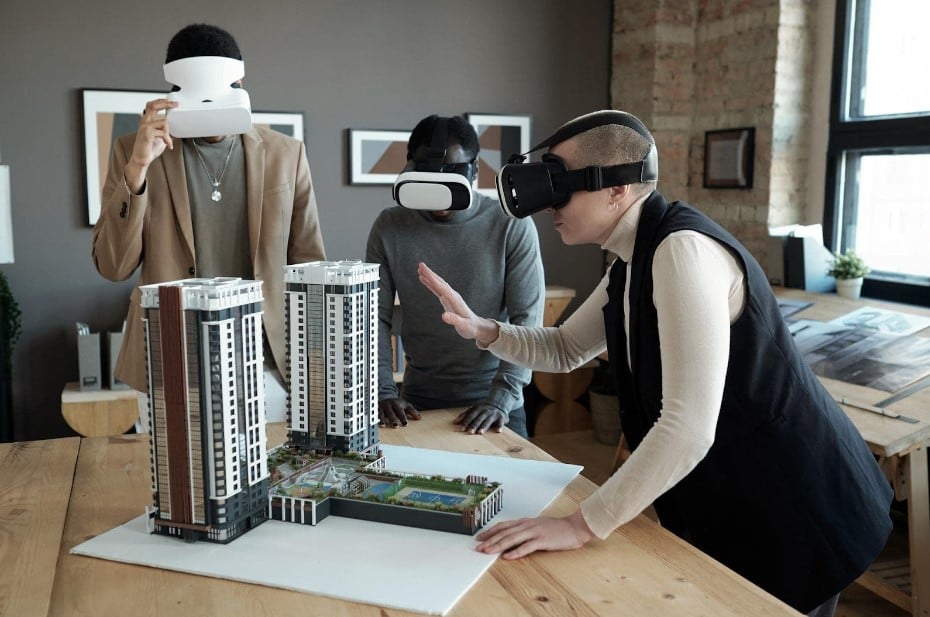
Edge Computing in Construction Operations
Data processing and connectivity management on construction sites are quite hard as they are usually in remote areas and are dynamic. The conventional mode of isolated data procurement may not be able to address the problems of delays, scalability, and limited bandwidth. In contrast, Edge computing promises a potential solution by allowing real-time data analysis and predictive maintenance right at the construction site. Edge Computing is about locating the computing resources closer to the data source to reduce the latency and the response time.
Using Edge Computing systems to process data locally means that sensor data from machinery, drones, and IoT devices can be analysed in real time, allowing construction teams to spot problems and make the right choices immediately. As mentioned by a report published by MarketsandMarkets, the market value for Edge Computing in the construction industry is estimated to amount to $2.8 billion by 2026 due to the demand for optimised work processes and productivity.
One notable benefit of Edge Computing in construction operations is the ability to predict maintenance. Through continuous performance evaluation of the equipment and generating the data locally, construction companies can uncover failures in advance before they occur, counteracting downtime and maintenance costs. The Journal of Construction Engineering and Management makes it clear how Edge Computing solutions contribute to equipment uptime increasing by 30% and maintenance costs decreasing by 25%.
Edge Computing also facilitates the efficient management of supply chains and resource allocation in construction projects. By analysing materials inventory, equipment utilisation, and workforce productivity at the edge, project managers can make data-driven decisions to optimise operations and reduce wastage. IBM highlights how the application of Edge Computing solutions resulted in a 15% decrease in lead times and improved supply chain visibility for a major construction project.
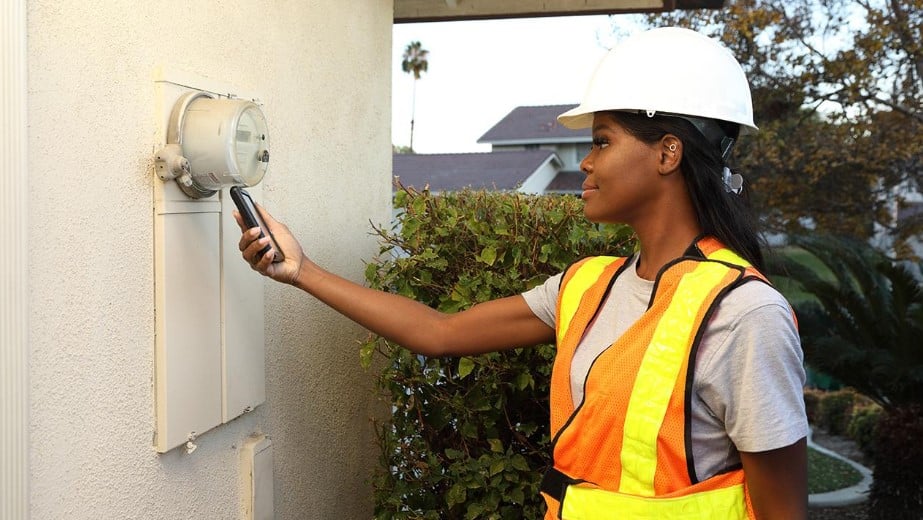
Natural Language Processing (NLP) for Project Management
In construction, NLP is gaining importance as it allows the extraction of new information from textual data, and it can be used to improve project managers’ communication and decision-making processes. Using NLP algorithms, project managers can scrutinise huge spans of textual data such as project milestones, deadlines, budget allocations and resource needs. This helps project managers to have a holistic image of the project and make the right decisions at the right time.
Moreover, NLP-powered insights can be used to detect construction trends and risks at an early stage and, therefore, enable the project managers to take control before the issues worsen. Research indicates that NLP analysis of project documentation is developing trends in construction techniques, building materials, and technology. NLP technology lets project managers handle communication, increase efficiency, and overcome risks in construction projects.

Benefits
With AI tech’s help, construction firms can be more productive, profitable and successful in their projects. AI offers various benefits such as:
Improved Safety Measures:
AI technology in construction is a key factor in maintaining high safety standards, real-time security monitoring, and predictive analytics. For example, AI-powered wearable devices can detect signs of fatigue or whether there is a risk, preventing accidents. NIOSH research has revealed that AI-based safety monitoring systems can reduce the number of injuries by half.
Enhanced Project Planning and Management:
AI plans and manages the project developers’ processes by analysing vast amounts of data and providing actionable information. As a result, the management team can be sure of proper resource allocation scheduling and risk forecasting. A report by McKinsey and Company discovered that using AI-powered project management tools could cut down on project delays by as much as 10% and improve overall project performance.
Increased Efficiency in Construction Processes:
AI technology, which includes automating mundane work and optimising the workflow, offers construction convenience. For example, AI drones scan construction sites more quickly and accurately than traditional methods and reduce time and resource waste. Deloitte estimates that AI adoption in construction can increase productivity by up to 20%.
Predictive Maintenance and Asset Management:
AI predictive maintenance systems are capable of analysing equipment data, predicting potential equipment failures, and proactively planning maintenance ahead of time. Timely problem identification allows construction companies to reduce downtime and lengthen the lifespan of their assets. According to IBM, AI-empowered predictive maintenance can cut maintenance expenses by up to 25%.
Quality Control and Error Detection:
AI algorithms analyse data from sensors and cameras to determine faults and errors in the quality of construction materials and processes. This helps uphold higher quality and thus decreases the chances of rework or costly mistakes. Research findings indicate that artificial intelligence-based quality control systems can reduce errors by almost 40% and optimise project quality.
Cost Reduction and Resource Optimisation:
AI-driven solutions optimise resource allocation and minimise wastage, leading to cost savings for construction companies. By analysing data on materials usage, equipment efficiency, and labour productivity, AI algorithms identify opportunities for cost reduction and efficiency improvement. According to MarketsandMarkets, AI adoption in construction can result in cost savings of up to 30%.
Challenges
Data Management and Integration:
The construction sector is often hindered by human or machine errors, inconsistency in algorithm languages used by different data providers, and data that may not be readable by all software. Dodge Data & Analytics has indicated that 64% of construction representatives face challenges in data integration. The implementation of AI systems with the existing construction management systems is also a barrier; the CII study helps demonstrate this.
Workforce Training and Adoption:
The industry requires advanced learning courses that consider the AI integration process for construction workers. The AGC of America study shows that 70% of construction firms find it difficult enough to train workers with the needed digital skills. According to a report from Construction Dive, technological resistance and cultural differences in the construction industry have created barriers to AI adoption.
Ethical and Legal Considerations:
The legal framework relating to AI-based decision-making in construction projects sparked doubts. Based on research by the Royal Institution of Chartered Surveyors (RICS), 56% of construction experts are concerned about the ethics of using AI in the industry. Legal problems of responsibility, privacy, and intellectual property rights in AI also complicate the situation, as indicated in the report by Marsh & McLennan Companies.
Initial Investment and Return on Investment:
Companies may regard the high expenses introduced by AI technologies as an obstacle to implementing AI in construction. McKinsey & Company found that 60% of construction executives cite high initial costs as a barrier to AI adoption. Additionally, uncertainty regarding the ROI and long-term benefits of AI adoption in construction projects adds to the challenge, as indicated in a survey by KPMG.
Regulatory Compliance:
Ensuring compliance with regulatory frameworks and standards for AI applications in construction is challenging. According to a report by the World Economic Forum, 45% of construction professionals struggle with regulatory compliance issues related to AI. Legal and ethical considerations in the use of AI-driven technologies in construction practices also pose significant challenges, as highlighted in research from the American Society of Civil Engineers (ASCE).
TechnoLynx Solutions: Driving Construction Innovation
At TechnoLynx, we’re committed not only to being innovative but also to being the mold-breakers in several industries. Our AI-enabled solutions are designed to improve safety, effectiveness and the overall success rate. However, safety is just the basics. Our customised solutions allow operations planning, scheduling, resource allocation, and job flow management, and they let you do the job much faster and more efficiently. Being versatile is what makes us different from others in the methods we offer.
We know that each company deals with its peculiar issues, so we craft our AI solutions to fit your specific case. Whether you are seeking a higher level of governance control over your supply chain, better quality management, or integrated project management, TechnoLynx will be the key element to your success in capturing modern market trends. Ready to revolutionise your construction projects with AI-driven innovation? Contact TechnoLynx today and unlock the potential for safer, more efficient, and highly successful outcomes!
Final Thoughts
In conclusion, the implementation of AI technology has led to several notable changes in the field of construction. Construction companies have noticed an increase in safety, efficiency, and productivity through AI-driven solutions. From identifying safety hazards to implementing project planning, AI has led a revolution in how construction projects are managed. It has contributed to a remarkable decrease in the number of accidents, reduction of cost overruns, and simplification of workflows, which in turn leads to better outcomes.
In time, it will be essential for construction companies to incorporate AI-based technologies completely into their processes. This implies making AI technologies part of their businesses and introducing them to their operations. Let’s seize this opportunity to leverage AI technology and make construction projects better than ever before!
Continue reading: What is the future of Automation in Construction?
References:
-
Abioye, S.O., Oyedele, L.O., Akanbi, L., Ajayi, A., Davila Delgado, J.M., Bilal, M., Akinade, O.O., & Ahmed, A. (2021). Artificial Intelligence in the Construction industry: a Review of Present status, Opportunities and Future Challenges. Journal of Building Engineering, 44(1), 103299. doi:https://doi.org/10.1016/j.jobe.2021.103299.
-
Autodesk University. (2021). Amsterdam’s 3D-Printed MX3D Bridge and the Future of Smart Infrastructure. [online].
-
Badini, S., Regondi, S., & Pugliese, R. (2023). Unleashing the Power of Artificial Intelligence in Materials Design. Materials, 16(17), 5927. doi:https://doi.org/10.3390/ma16175927.
-
Fisher, E., Flynn, M.A., Pratap, P., & Vietas, J.A. (2023). Occupational Safety and Health Equity Impacts of Artificial Intelligence: A Scoping Review. International Journal of Environmental Research and Public Health, 20(13), 6221–6221. doi:https://doi.org/10.3390/ijerph20136221.
-
Hoster, B., Riddell, G., & Smith-Bingham, R. (n.d.). Governing Artificial Intelligence. [online] www.mmc.com.
-
IBM. (n.d.). IBM Supply Chain. [online]
-
Khan, N., Syed, Yang, J., Park, C.-S., & Lee, D. (2023). Construction Work-Stage-Based Rule Compliance Monitoring Framework Using Computer Vision (CV) Technology. Buildings, 13(8), 2093–2093. doi:https://doi.org/10.3390/buildings13082093.
-
Li, S., Wang, Q.-C., Wei, H.-H., & Chen, J.-H. (2024). Extended Reality (XR) Training in the Construction Industry: A Content Review. Buildings, 14(2), 414. doi:https://doi.org/10.3390/buildings14020414.
-
Long, Y., Bao, Y.-Q., & Zeng, L. (2023). Research on Edge-Computing-Based High Concurrency and Availability ‘Cloud, Edge, and End Collaboration’ Substation Operation Support System and Applications. Energies, 17(1), 194–194. doi:https://doi.org/10.3390/en17010194.
-
Roepke, A. (2023). New Study Shows Greater Automation of Project Management Processes Improves General Contractors’ Projects and Bottom Lines. [online] Dodge Construction Network [Accessed 18 Apr. 2024].
Cover image: Freepik













